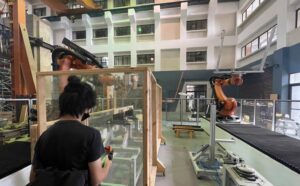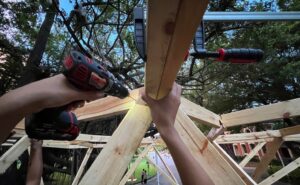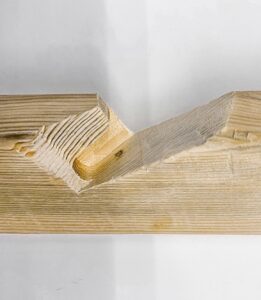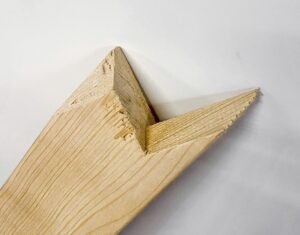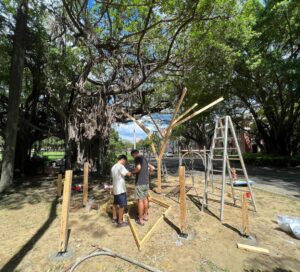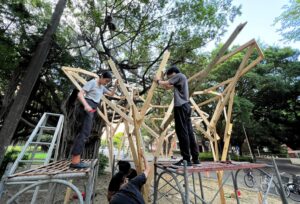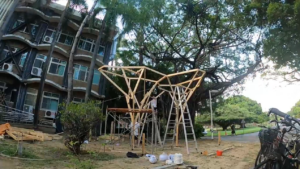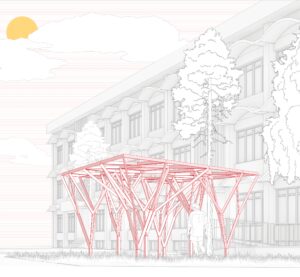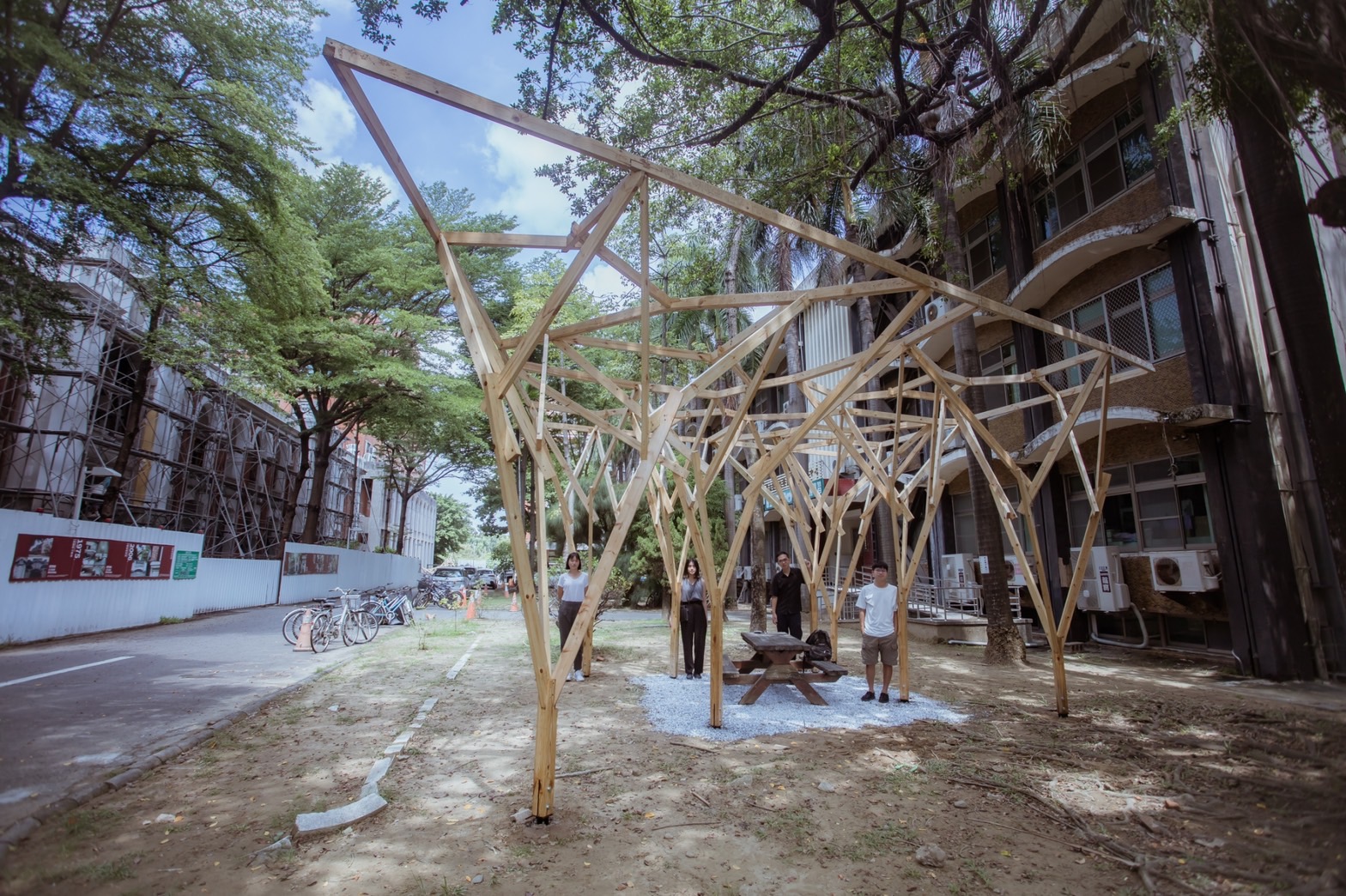
Designers: Chien-Kai Kuo, Cheng-Wen Fu, Pak-Hei Wong, Chong-Ming Zheng, Yi-Xuan Lee, Zhi-Yuan
Advisors: Yang-Ting Shen, Chia-Ching Yen
TA: Mi-Chi Wang, Lien-Kai Huang, You-Min Gao
In this architectural project, we create a tree-like structure that gracefully blends in with the surrounding trees using parametrical tools. The design incorporates clear geometric features to guide sightlines throughout the campus. Each level’s height is determined by human scale, field of view, and the spatial experience along the walking path. The design process carefully considers variations in column positions to accommodate the structural requirements of each unit. We also define terraces and paths to enhance the overall experience.
The dimension of the component is determined based on stability and joinery design, ensuring optimal performance. Similarly, the length of the components is determined by the fabrication constraints of the robot and the stability requirements of each unit. The branching pattern of the B-M layer ranges from 1 to 3, progressing from the bottom to the top. Notably, the angle between branches in the M layer must exceed 90 degrees, further emphasizing structural integrity. During the assembly process, the dovetail tenon is designed to be wider at the top and narrower at the bottom, facilitating secure connections. The M-T layer comprises 1 to 2 branches, strategically positioned to align with the z-axis axis of the M layer. At the junction, a cross-half-lap joint is employed, ensuring a robust and seamless connection between the T layer and the overlapping M layer.
